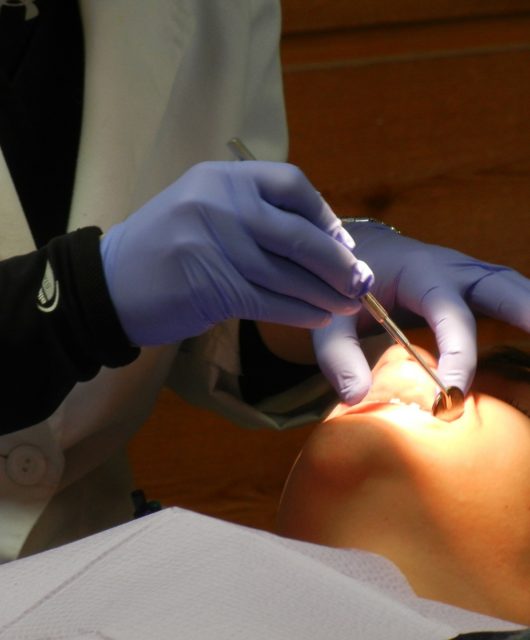Sound Off the Facts: How Does a Hearing Aid Work, Exactly?
Have you ever wondered how does a hearing aid work? We unravel the mystery in this guide to how this helpful technology works.
Hearing aids are extremely useful tools for those people who have experienced any measure of hearing loss. We’re fortunate to have these tools because hearing, like many functions of the body, is unable to be restored once it is lost. Thanks to the ever-evolving technology, these assistive gadgets have gone through numerous advancements and hearing aids that are rechargeable today have far better sound quality and more advanced features than before.
For that reason, hearing aids can be the only way for people to regain the experience of hearing the beautiful sounds that most people have access to every day. While many people use and appreciate hearing aids, not everyone knows how they work.
So, how does a hearing aid work?

How Do Our Ears Work in the First Place?
Before we get into how a hearing aid works, let’s talk about how we lose our hearing in the first place.
First and foremost, we lose our hearing as we age. As we get to the years of 55 and older, it’s extremely common for us to experience a decrease in the ability to hear. As we get past the age of 75, there’s a roughly 50 percent chance that our hearing has diminished in some way.
The other way that we lose our hearing is through regular exposure to extremely loud noises. Even extremely short loud sounds can cause lasting damage. Things like explosions or crashes can be sounds that permanently damage your hearing.
Additionally, recurring sounds like those in a metal shop or warehouse can have the same effect. In the same vein, gunshots from hunting, revving engines, and loud music played through headphones are equally damaging. These are all sounds which come in at over 75 decibels.
75 decibels is typically the limit of safe volume. As sounds get past that point, especially beyond 85 decibels, hearing loss is extremely common if the sound persists over long periods of time. As the sound gets louder, it takes a shorter time to cause hearing loss.
What Loud Sounds Do to the Ear
The ear is composed of a few parts that turn sound waves into messages that our brains receive and interpret. Waves are turned into electrical signals that are then received by our auditory nerves.
A sound comes in from outside and enters the ear canal. It then reaches the eardrum, which translates the sound into vibrations that signal the bones in our inner ear. Our inner ear bones are called the stapes, incus, and stapes.
These bones translate the vibrations into ripples in the fluid of the cochlea. Those ripples stimulate sensory hair cells in the inner ear which triggers chemicals to generate an electrical signal. Our auditory nerves then send that electrical signal to our brains which translates the signal into the sounds that we understand.
Pretty complicated stuff. It’s all very delicate, too, which means that shocks to the system such as explosions can alter our ears’ processes. The main cause of hearing loss is the slow failing and death of the hairs in our cochlea that, once gone, can never grow back.
Additionally, loud noises can overload the system and rupture the eardrum or cause significant damage to the bones that translate vibration in our inner ear.
How Does a Hearing Aid Work?
Hearing aids are comprised of five essential parts: the microphone, the amplifier, the battery, the microchip, and the receiver.
Microphones receive incoming sounds from the outside world. In similar ways to our actual ears, the microphone receives sound and translates them into digital signals to be processed by the microchip.
The microchip is a customizable element of the device that allows sound professionals to fine-tune the device to your needs. Not all hearing loss is the same, and some people require highly specific hearing aids to meet their needs. The microchip is essentially the brain of the device.
The amplifier takes the digital signals translated from the microphone and makes them louder and stronger. They may even alter the sounds to make them crisper and more distinct. The volume at which you receive the sounds is customizable through the use of the microchip.
The receiver takes the digital signals from the amplifier and translates them into vibrations that can be understood by the ear. These vibrations meld with the normal function of our inner ears, except it provides a clearer, louder sound for the damaged ear to work with.
Forms of Hearing Aids
Because there are different parts of the ear that can result in hearing loss, there are different forms of hearing aids that serve specific functions. If you’re interested in finding the right aid for you, you can learn more here.
While some aids are visible, the less commonly known ones are not. The Invisible-In-The-Canal aid is a device that you insert deep into the ear canal and is completely invisible. You’re still able to take the device out every night, and this particular hearing aid is meant to benefit mild to significant hearing loss.
You also have the option of a device that’s inserted completely into the ear canal. It’s removable by a small handle that you can access and is also used to treat mild to significant hearing loss.
There are versions of hearing aids that offer the ability to place a receiver in the ear canal that is constructed with thin electrical wires that serve to reduce feedback and distortion.
The better-known aids are ones that are located in the actual canal of the ear. They serve as a sort of barrier between the ear canal and the outside world. All sounds that enter the ear are then translated through the device and amplified. The same is true for hearing aids that cover a larger portion of the outside ear.
The hearing aid you need may be covered by your insurance plan. If it isn’t, it may be time to look for a plan that covers your needs.
Interested in Learning More?
Hopefully, we’ve answered the question “how does a hearing aid work?”
It is essential that you see a doctor if you feel yourself losing hearing. Whatever the reason that your hearing has begun to go, it’s likely that a professional could identify the problem and try to stop it.
Additionally, you’ll be able to get the tools needed to start hearing again as soon as possible. As we get older, we need to take steps to prepare ourselves for healthy living in our golden years. If you’re interested in learning more about how to plan for old age, we have the information you need.









